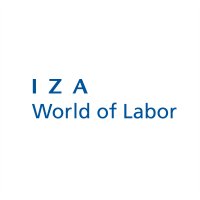
Uni Essex Economics Dept
@uoe_economics
The University of Essex, Department of Economics has been ranked 4th in the UK for research power (REF 2021)
ID: 378401004
http://www.essex.ac.uk/departments/economics 23-09-2011 04:15:39
1,1K Tweet
1,1K Followers
331 Following





New CEPR Discussion Paper - DP20052 A Man’s World? Consumption-Based Investment in the Mutual Fund Industry Hans Peter Grüner Hans Peter Grüner Department of Economics, University of Mannheim, Alexandra Niessen-Ruenzi Department of Economics, University of Mannheim, Christoph Siemroth Uni Essex Economics Dept ow.ly/pnS650Vj2uU #CEPR_BCF #EconTwitter




"The European migration crisis of 2015–2016 exposed weaknesses in the asylum system that have been only partly addressed," says Tim Hatton Uni Essex Economics Dept in his article: European asylum policy before and after the migration crisis. wol.iza.org/articles/europ…
























